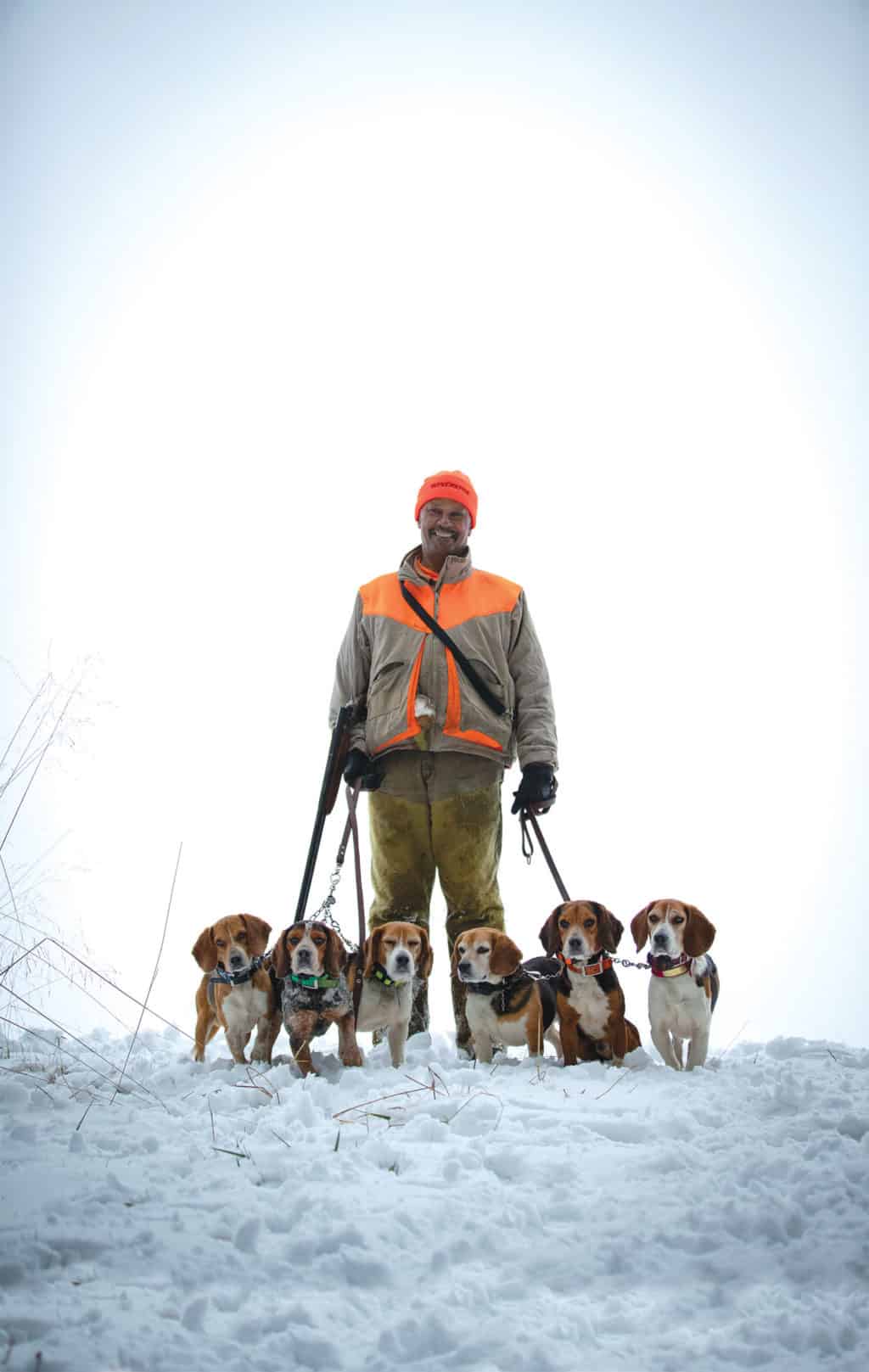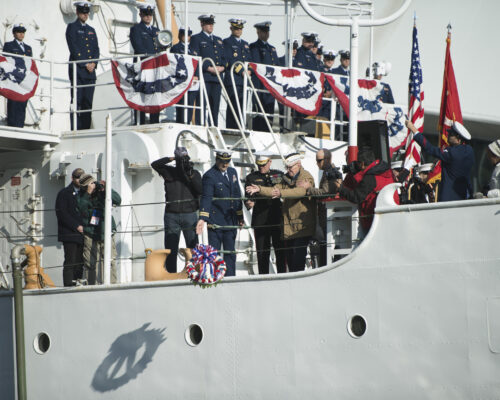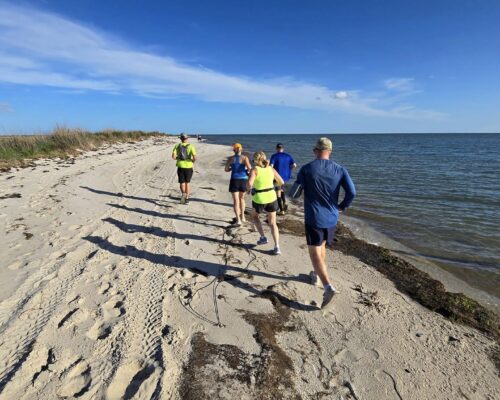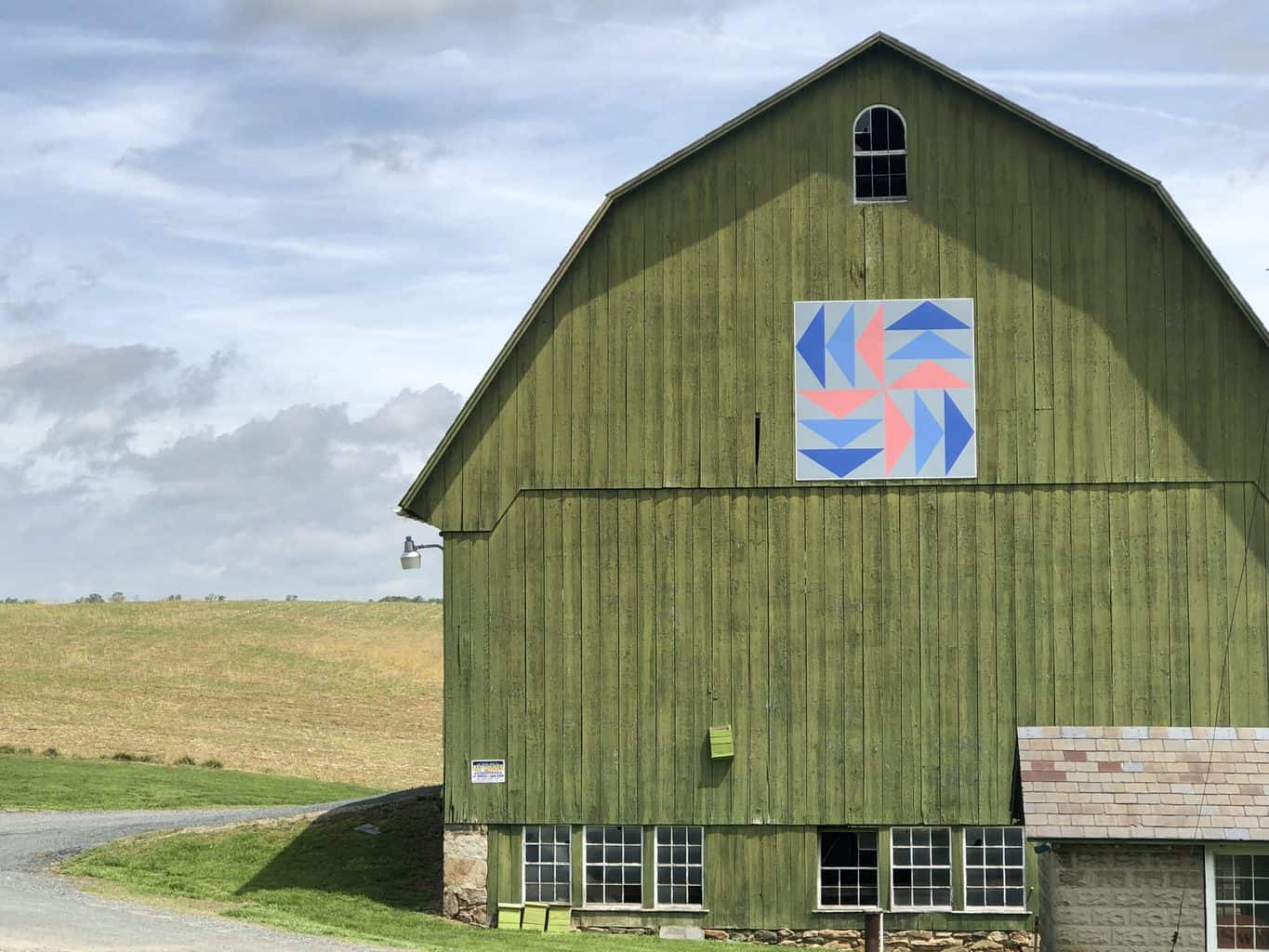When is comes to rabbit hunting, Charles Rodney is the leader of the pack
“Bozo! Here-ya-go! Fine-im! Hank! Git-‘em Blue! Sam! C’mon Buckshot! Git in there Rattler!” bellowed Charles Rodney as he urged his six beagles into the thorny rough. The four-legged band scattered through the tangled maze of limbs, briars and shrubs with determination. The dogs were up and on the scent of a rabbit. The game was afoot.
Rodney followed them in and bellowed, “Yeeah-Yeah-Yeea-Yeea-Yeea-Yeea-Yeea Yeeeeeahhhhhhh,” a mix of drill sergeant and auctioneer with a dash of southern revivalist. It was a foreign language to me, fascinating and mesmerizing.
Rabbit hunting is orchestrated chaos, defined by a secret language between the handler and his pack. Rodney is the maestro, the six beagles the musicians, and we, the hunters, their enthralled audience.
I met Rodney a few years back at a Coastal Conservation Association fundraising event where he had donated a rabbit hunt for the auction. He was also the auctioneer. Prior to going afield with him, my understanding was he was the premier rabbit hunter in the region. In fact, the Winchester Arms and Ammunition Company recently produced a short film on him: The Rabbit Hunter. I knew he was congenial and efficient, but I expected that the hounds would be the story. Man, was I wrong.
Rodney grew up on a sharecropping farm in Pointe Coupee Parish about 25 miles west of Baton Rouge. He was the youngest of seven children, and he learned to hunt squirrels and rabbits for food under the tutelage of his brother Francis, who was eleven years his senior. “We had very little in the way of material things, but we never went hungry,” he said. “We grew our own vegetables and raised chickens, and we were happy. And we hunted and fished for food.”
In 1970, on a Christmas break from classes at Southern University in Baton Rouge, he visited his eldest brother, a priest at St. Luke’s Catholic Church in Washington, D.C., and there, he met Judith Butler. “She wanted nothing to do with me,” he recalls. “I changed my attitude, cut my hair and returned the next Christmas.” The couple married in the fall of 1972. They raised three children—Charlita, Charla, and Charles, Jr., and they are proud grandparents of six. His rabbit hunting was on hold while he tended to family life and a 31-year career in federal-level human resources and equal employment opportunity work. With retirement, he returned to the fields to hunt turkeys, deer, and waterfowl. However, the constraints of being still, quiet, and stuck in a blind didn’t suit his personality. “Sitting still for all that time drove me three-quarters crazy,” he joked. “It’s the excitement, the movement and camaraderie that I enjoy about hunting rabbits.”
One thing that’s evident from the onset about Rodney is he not only talks the talk about wildlife conservation, he walks the walk. He routinely gives back to conservation causes by donating hunts as well as serving as auctioneer at fundraising events across the region. Everyone has high praise for the man called The Rabbit Hunter.
Congressional Sportsmen’s Foundation President Jeff Crane says, “Charles introduced me to the storied tradition of rabbit hunting behind a pack of beagles, and I am hooked. Hunting rabbits with him is a highlight of my Maryland hunting every year and has extended my season by a month to include February.”
Maryland Department of Natural Resources’ Wildlife & Heritage Service Director Paul Peditto adds, “Charles is a true gentleman, sportsman, and passionate conservation supporter. He almost always includes a new guest at every hunt in an effort to introduce or re-engage a hunter to the great sport of chasing rabbits.” Peditto also shared that during Charles’ time on the governor’s Wildlife Advisory Commission his wisdom helped guide conservation decisions, offering a unique perspective as an “enthusiastic upland game hunter who travels across the region to run his pack of pups. Charles talks and walks rabbit hunting and conservation like few others in Chesapeake country.”
The Dogs
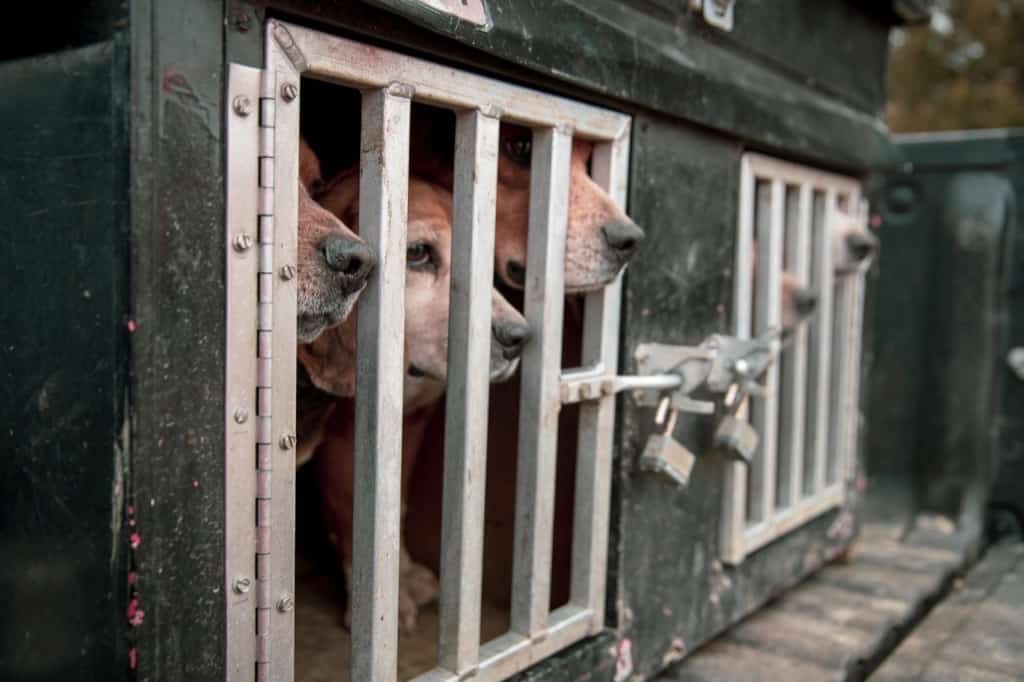
I spent a few hours this past spring scouting a property with Rodney and CBM editor Joe Evans. I’ve tried chasing rabbits without dogs, but it’s nothing like hunting with a pack. Trained beagles make all the difference.
Rodney’s pack members—Rattler, Blue, Hank, Buckshot, Sam, and Bozo—range from five to nine years old. To me, they all sound alike, but to Charles, each has a voice as unique as their personality.
He acquires the dogs from North Carolina and Virginia breeders he knows and trusts. They come to him as “starter” dogs, one- to two-years-old, ready to hunt but in need of fine-tuning. He takes only males to avoid accidental pregnancies. He believes that there are three essential traits for a good rabbit dog—brains, drive, and a “good mouth,” meaning a nose to pick up and keep on the scent. Rattler and Buckshot are the most dependable, he says. His pack hunts at “medium-speed,” he says, which is an ideal walking speed for folks he guides, some of whom are older.
“I never run with another man’s pack,” he says emphatically. “Bad habits spoil the hunt.”
“I keep my dogs for a long time,” he says. “Even when they can’t hunt anymore.”
The beagle’s nose, size and determination to root rabbits from their tangled lairs make the breed the preferred rabbit hunting dog. According to the American Kennel Club, they are among the most popular dog breeds in the country. They are kind and warm with their brown or hazel eyes framed by houndy ears set low on a broad head. They come in two sizes—those that stand under 13 inches at the shoulder, and those between 13 and 15 inches. Rodney runs the small version, but they are certainly “big for their inches,” as dog folks say. Moreover, they are loyal, happy-go-lucky, full of expressive personality, generally easygoing, and they enjoy the company of friends. That’s also an accurate description of Charles Rodney.
The Hunt
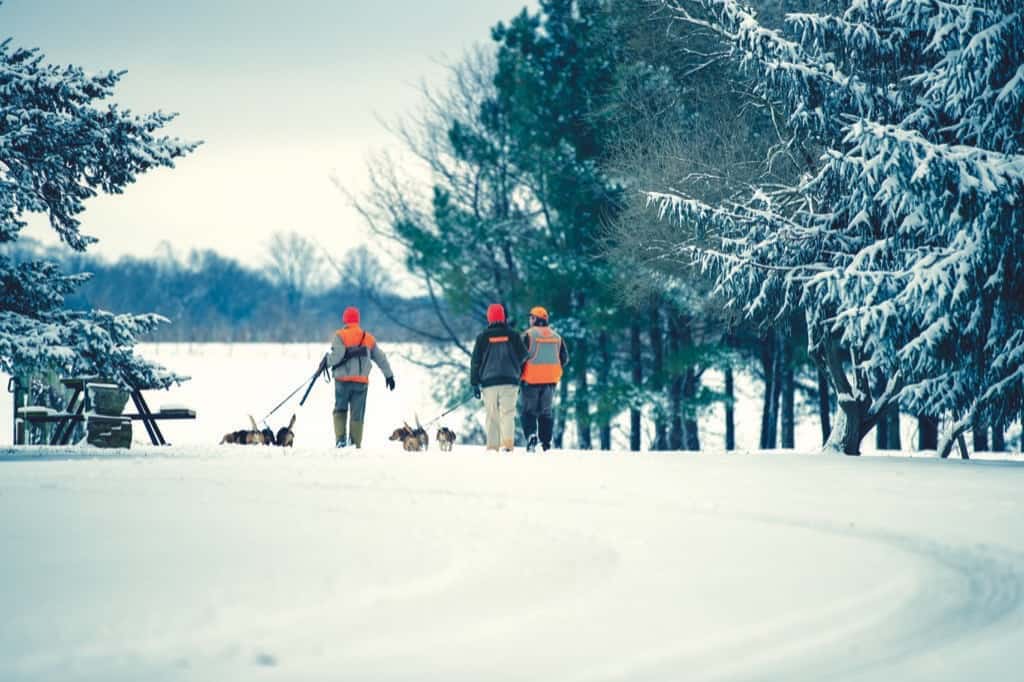
We met on a crisp fall day, a light coating of frost on the farm fields as we drove north on Maryland’s Eastern Shore. Rabbit season in Maryland starts the first Saturday in November and runs through February. Essential gear included a hunting license, blaze-orange hat and vest, twenty-gauge shotgun, hi-brass #6 shot, and mud boots. Rodney added chaps to his ensemble to protect his legs as he pursued the dogs into the thorny underbrush.
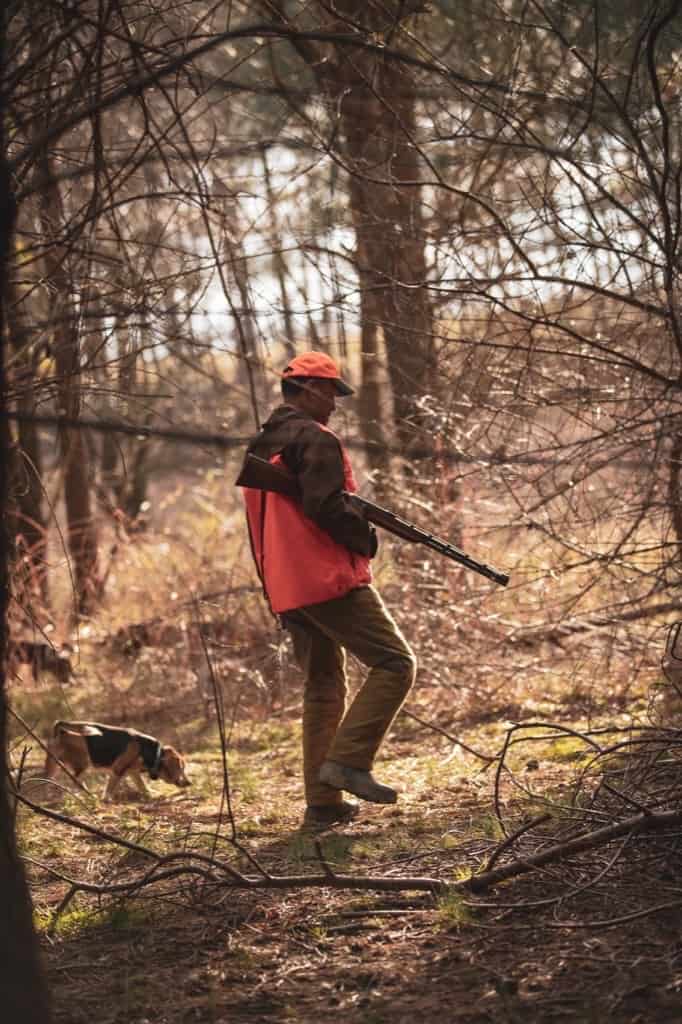
Stanley Watkins’ 190-acre property is in the Chesapeake Wildlife Heritage Program (cheswildlife.org), and as such, is in a conservation easement, cultivated for wildlife with wild forest, managed fields, and wetlands. It’s ideal rabbit territory. Evidence of the ecological and wildlife value was immediately apparent with bald eagles soaring above, waterfowl tolling in and flying about, deer bounding into the woods, and foxes roaming in a pursuit similar to ours.
There were six of us in the hunting party. Watkins and his bother carried side-lock muzzle-loading shotguns—a home-built replica and a circa 1860s original—just to set the old-school tone. The rest of us were not as interesting in that regard.
Rodney and Watkins had hunted together before, and on Rodney’s advice, Watkins bush-hogged ample swaths through the wild growth and created brush pile cover for the rabbits. This provided easy movement and safe sightlines for the gunners as Rodney and his dogs combed the wild areas.
Rodney warned us that a rabbit will “make the best hunter and best shot look bad on his best day. He’ll run straight back at you, run around you and come in from the back. The best thing is to find a clear spot, stand there, and be quiet.” He went on to explain that a cottontail might run several hundred yards in a circle to confuse and elude the dogs. They’ll hide in the thick brambles, and, when the dogs get close, they’ll dart out. They’re tricksters; wily things that often hide in plain sight. And they can change direction on a dime, leaving good shots looking like rank amateurs.
Back home in Louisiana, they hunted marsh rabbits, a smaller but perhaps tougher version of Chesapeake cottontails, and they would jump in, swim, and hide under low-hanging branches with only their noses protruding from the water.
Going into the field, Rodney mused, “I love it when the dogs are working in unison, just like a team, everyone has a job and a position, like a football team, and the first one gets that scent and gives that certain bark and the chase is on.”
We set up around a tousled pile of growth and the dogs lunged in. The morning quiet was broken by the soulful baying. I resisted whispering, “Be vewwy vewwy quiet, I’m hunting wabbits.”
“Be ready now!” Rodney instructed as the clamorous hounds darted in and out of the heavy brush. “He’s running your way!” he yelled. Pow!
A single shot found its mark. Rodney asked the gunner to let his beagles enjoy the smell of the dead quarry, a reward for a job well done. Over the next few hours a similar pattern followed. Dogs running here and there, howling and barking, Rodney shouting encouragement, and someone shouting, “There he goes,” and a shot in the distance. A cacophony. It was a rampage of action and laughter. We had a total of five rabbits in our coats as midday approached, and the action slowed. The dogs remained keen but tuckered after nearly four hours of steady running and sniffing.
We called it a day.
Some people are born to do perform at a level the rest of us can only admire and bask in their glow. Charles Rodney is meant to run dogs and chase rabbits. A more delightful combination for a day in the field, I cannot imagine.

